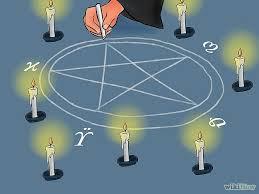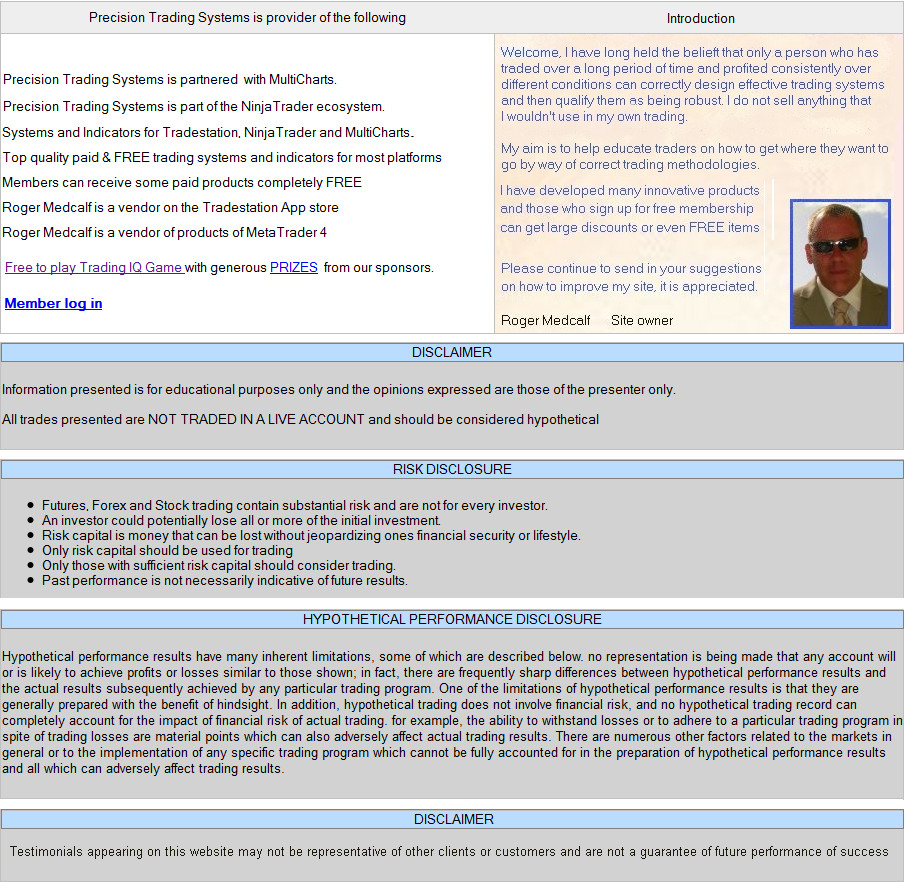
|
|
LOOKING FOR HELP SEARCHING FOR 3 THE MAGIC NUMBER
<< QUESTION >>
Hi, I saw you might be able to help. I need to import an excel spreadsheet into a Tradestation Renko indicator. I just want the Renko indicator on the chart to only show up or down ticks when it strikes a number with a # 3 value in it, Simple as that. Example: it would not tick up to down for numbers that look like (1.005, or 145.067, or 120.444) it would just recognize numbers with a 3 inside the value. Example : up or down tick for ( 1.003, or 133..623, or 133.624, or 133.625).
I am not a coder. or advanced at this. I just know what I am looking for.
NOTE: It can be an indicator, in its own window, it does Not Need to be in a paint bar format
Linebreak code below and example spreadsheet attached with some highlighted numbers. So you would know what I am talking about.
Thank You Again. It is Very Much Appreciated.
{*********************************************************
LineBreakBars_2 Indicator by [[NAME]]
Description: Shows 2 LineBreak Bar Ranges on a Standard Chart
V2 Original
v103.3 Inputs to Variables ReArranged code,
103.4 Added Standard Bar Plots, Adapted to 2LineBreak(was 3LB)
Arrays Renamed "LineHigh"LineLow -to- "BarHi"BarLo"
LoopCounters renamed from "Value1" -to- "x"
Now a Indicator (was a PaintBar)
**********************************************************}
[LegacyColorValue = true];
Inputs:
UpColor(green),
DnColor(red),
InitialRisk(2),
ShowHrzBreakLines(false);
Vars:
LastHigh(0),
LastLow(0),
DrawColor(0),
TL1(0),
TL2(0),
BrkPt(0),
x(0),
cDN(0),
cUP(0),
pBrkLines(false),
Risk(0);
Arrays:
BarHi[2](0),
BarLo[2](0),
Color[2](0);
if BarNumber = 1 then begin
LastHigh = H;
LastLow = L;
{Inputs to Variables below}
pBrkLines = ShowHrzBreakLines;
cUP = UpColor;
cDN = DnColor;
Risk = InitialRisk;
end;
{***** handle first 3 lines separately *****}
If BarNumber = 3 then begin
for x = 0 to 1
begin
if C[x+1] > LastHigh
then begin
BarHi[0] = C[x+1];
BarLo[0] = LastHigh;
Color[0] = green;
LastLow = LastHigh;
LastHigh = C[x+1];
end
else
if C[x+1] < LastLow then
begin
BarLo[0] = L[x+1];
BarHi[0] = LastLow;
Color[0] = red;
LastHigh = LastLow;
LastLow = C[x+1];
end;
end;
end else
{***** DETERMINE BAR HIGH ********************************}
begin
if C > MaxList(BarHi[0],BarHi[1])
then begin
{ get possible entry pt }
Value2 = MaxList(BarHi[0],BarHi[1]);
for x = 0 to 1
begin
BarHi[x] = BarHi[x+1];
BarLo[x] = BarLo[x+1];
Color[x] = Color[x+1];
end; {// End Of "for x" //}
BarHi[1] = C;
BarLo[1] = LastHigh;
LastLow = LastHigh;
LastHigh = C;
Color[1] = cUP;
DrawColor= cUP;
if pBrkLines then
{ 2 dn colors in a row }
if Color[1] = cDN
and Color[0] = cDN
and BarNumber = BarNumber[1] //and date = date[1]
then begin
{ calc initial stop }
Value1 = MinList(BarLo[0],BarLo[1]);
{ initial stop no more than 0.2 from entry }
Value1 = MaxList(Value1,Value2 - Risk);
tl1 = TL_New(date,time,Value1,date,time[2],Value1);
tl_SetColor(tl1,cUP); {initial stop}
tl2 = TL_New(date,time,Value2,date,time[2],Value2);
TL_SetColor(tl2,cUP);
end;
end else {//End Of "if C > Maxlist" //}
{***** DETERMINE BAR LOW ********************************}
if C < MinList(BarLo[0],BarLo[1])
then begin
{ get possible entry pt }
Value2 = MinList(BarLo[0],BarLo[1]);
for x = 0 to 1
begin
BarHi[x] = BarHi[x+1];
BarLo[x] = BarLo[x+1];
Color[x] = Color[x+1];
end; {//End Of "for x" //}
BarLo[1] = C;
BarHi[1] = LastLow;
LastHigh = LastLow;
LastLow = C;
Color[1] = cDN;
DrawColor= cDN;
if pBrkLines then
if Color[1] = cUP
and Color[0] = cUP
and BarNumber = BarNumber[2] //date = date[3]
then begin
Value1 = MaxList(BarHi[0],BarHi[1]);
{initial stop no more than 0.2 from entry}
Value1 = MinList(Value1,Value2 + Risk);
tl1 = TL_New(date,time,x,date,time[2],x);
tl_SetColor(tl1,cDN);
tl2 = TL_New(date,time,Value2,date,time[2],Value2);
TL_SetColor(tl2,cDN);
end; {// End Of "if pBrkLines" //}
end; {// End Of "if C < Minlist" //}
end; {//End Of "If BarNumber = 3" //}
{RePlot PriceBars}
Plot1( H, "True BarHi" );
Plot2( L, "True BarLo" );
plot3( C, "True Close" );
{LineBreak Bar Plots}
Plot4(BarHi[1], "LB BarHi" ,DrawColor);
Plot5(BarLo[1], "LB BarLo" ,DrawColor);
<
Due to my moral conscience I will decline to help you develop a technique which is flawed.
My Reason is as follows.
Load you magic number 3 chart then take a short position in SP500 Emini futures (which trades in quarters ) at 2044.00 and find no movement in your chart until ....
2044.00
2044.25
2044.50
2044.75
2045.00
2045.25
2045.50
2045.75
2046.00
2046.25
2046.50
2046.75
2047.00
2047.25
2047.50
2047.75
2048.00
2048.25
2048.50
2048.75
2049.00
2049.25
2049.50
2049.75
2050.00
2050.25
2050.50
2050.75
2051.00
2051.25
2051.50
2051.75
2052.00
2052.25
2052.50
2052.75
2053.00 >> Magic number 3 is found when 11 point loss is achieved: Loss of - $550 per contract before you get to know.
Or worse still, imagine an English equity that trades in quarters, then taking a short position at 4.00 pence per share.
4.00
4.25
4.50
4.75
5.00
5.25
5.50
5.75
6.00
6.25
6.50
6.75
7.00
7.25
7.50
7.75
8.00
8.25
8.50
8.75
9.00
9.25
9.50
9.75
10.00
10.25
10.50
10.75
11.00
11.25
11.50
11.75
12.00
12.25
12.50
12.75
13.00 >> The magic number 3 appears to show you that you have achieved a massive loss of 225% when people using other charts would have known their trade was bad a few weeks before you did.
This chart idea may well be good for helping you know when to cast a spell on someone but it is unlikely to be much use in the stock market.
Verdict: Request denied.


|
|
It seemed like a very strange idea to me, I wonder why he is obsessed with the number 3?
